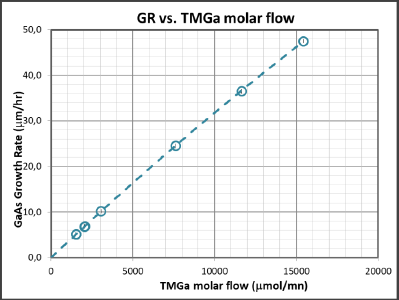Within WP1 of the EU funded project SiTaSol AIXTRON SE and AIXTRON Ltd. investigate and develop low cost III-V epitaxy processes and reactor concepts. The focus of the research are the investigations and developments on metal organic chemical vapor deposition (MOCVD) reactors to increase growth rate of Ga(In)As(P) and to improve production cost.
MOCVD of III-V compound semiconductors is a well-established technique used in industry for the production of highly efficient multi-junction solar cells, LEDs, or lasers. Recently Fraunhofer ISE and AIXTRON SE published “MOCVD growth of GaAs with growth rates up to 280 μm/h at the DGKK (Deutsche Gesellschaft für Kristallwachstum und Kristallzüchtung e. V.) workshop 2019 in Dresden, Germany. Those GaAs samples were grown with an Aixtron CRIUS Close-Coupled Showerhead reactor in a 7x4” configuration. In this standard reactor design, the gap distance between ceiling and susceptor can be adjusted. Standard precursors including TMGa and AsH3 were used for GaAs deposition. In that work, growth rates up to 280 μm/h were demonstrated for GaAs. These values were achieved by increasing the concentration gradient between the showerhead and the substrate and therefore the material transport to the wafer surface. In this reactor type, the concentration gradient can be increased by reducing the process gap height as well as the total H2 carrier gas flow. The experimental results could be reproduced both by accurate simulation [1] and with a simple calculation using a control volume approach.
Based on these previous results AIXTRON SE continued studies for improving throughput and production costs for MOCVD systems within SiTaSol. For industrial scale CCS reactor the GaAs growth rate increases linear with the TMGa molar flow up to 48 μm/hr as expected from theory (see Figure above). Limitation of the growth rate is only due to TMGa and AsH3 delivery capability. This is an interesting finding, and might lead to further process optimization potentials, for even higher growth rates.
References
[1] D. Brien, M. Dauelsberg, K. Christiansen, J. Hofeldt, M. Deufel, and M. Heuken, Journal of Crystal Growth 303, 1, 2007.
